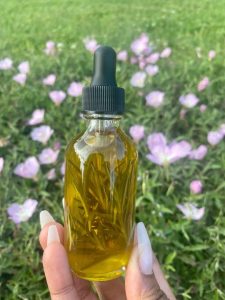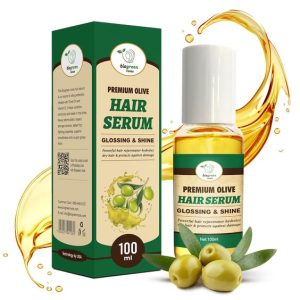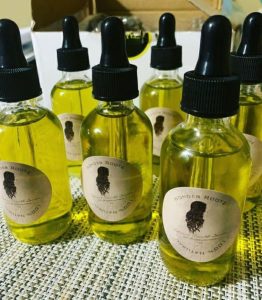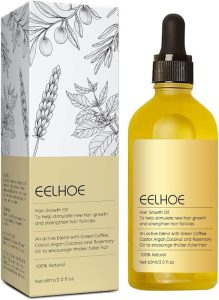
Olive oil is a popular natural ingredient used in many beauty routines. For centuries, people have used it for hair care due to its moisturizing properties. However, it’s important to use olive oil correctly to get the desired results. This article explores different ways to incorporate olive oil into your hair care routine, along with important considerations for different hair types.
Understanding Your Hair Type is Key
Before diving into olive oil treatments, understanding your hair type is crucial. Here’s a quick breakdown:
Fine Hair:
Fine hair can be easily weighed down by products.
Thick Hair:
Thick hair can benefit from moisture, but too much oil can make it appear greasy.
Curly Hair:
Curly hair craves moisture, but some oils can disrupt the curl pattern.
Knowing your hair type helps you determine how much olive oil to use and how often to use it.

Simple Techniques for Using Olive Oil on Hair
There are several ways to incorporate olive oil into your hair care routine. Here are a few methods:
-
Pre-Wash Treatment: Apply a small amount of olive oil to dry hair, focusing on the ends. Leave it on for 30 minutes to an hour before shampooing.
-
Deep Conditioner: Mix it with honey or yogurt to create a nourishing hair mask. Apply it to damp hair, leave it on for 20 minutes, then rinse thoroughly.
-
Split End Treatment: Rub a tiny amount of olive oil onto split ends to smooth and protect them. Be mindful not to use too much, as this can make hair look greasy.
Important Considerations When Using Olive Oil
Here are some things to keep in mind when using it on your hair:
-
Less is More: A little olive oil goes a long way. Start with a small amount and increase gradually if needed.
-
Scalp Sensitivity: If you have a sensitive scalp, do a patch test on your inner arm before applying it to your hair.
-
Clarifying Shampoos: Regular use of clarifying shampoos can help remove oil build-up, especially if you use it treatments frequently.

Alternative Hair Care Options for Different Hair Types
While it can be beneficial, it’s not for everyone. Here are some alternative hair care options for different hair types:
-
Fine Hair: Look for lightweight leave-in conditioners or hair milks for moisture without weighing down hair.
-
Thick Hair: Deep conditioning treatments specifically formulated for thick hair can provide intense hydration.
-
Curly Hair: Leave-in conditioners or hair styling creams designed for curly hair can help define curls and control frizz.
Maintaining Healthy Hair with a Balanced Routine
Healthy hair requires a balanced approach. Here are some general hair care tips:
-
Gentle Cleansing: Use a shampoo that cleanses your scalp without stripping your hair of natural oils.
-
Condition Regularly: Conditioning helps replenish moisture and keeps hair manageable.
-
Healthy Diet: Eating a balanced diet rich in essential nutrients promotes overall hair health.
It can be a natural and affordable way to add moisture and shine to your hair. However, it’s important to use it correctly and consider your hair type. Experiment with different methods and find what works best for you. Remember, a balanced hair care routine with gentle cleansing, regular conditioning, and a healthy diet is key to achieving healthy, beautiful hair.

Finding the Right Olive Oil for Your Hair
While most olive oil is safe for topical use, there are a few things to consider when choosing one for your hair:
- Extra Virgin Olive Oil (EVOO): This is the least processed type of olive oil and may contain the most beneficial properties for hair.
- Light Olive Oil: A good option if you have fine hair, as it’s lighter and less likely to weigh down strands.
Important Note: Regardless of the type, look for food-grade olive oil for topical use on hair.
A Patch Test Before You Dive In
It is generally safe for most people, but it’s always a good idea to do a patch test before applying it all over your hair. Here’s how:
- Apply a small amount of olive oil to your inner arm.
- Wait 24 hours.
- If you experience any redness, itching, or irritation, discontinue use and consult a doctor.
Safety Precautions When Using Olive Oil on Hair
Here are some additional safety precautions to keep in mind:
- Avoid applying directly to scalp: It can clog scalp pores, so focus on the mid-lengths and ends of your hair.
- Don’t leave it on for too long: Extended periods can make hair greasy. Start with shorter treatments and increase gradually if needed.
- Rinse thoroughly: Ensure you remove all the olive oil during shampooing to prevent build-up.
Remember, Consistency is Key!
Like any hair care routine, consistency is key when using it. Regular treatments can help improve hair health and overall appearance. However, it’s important to be patient. Results may take time and will vary depending on your hair type and individual factors.
Finding the Right Olive Oil for Your Hair
While most olive oil is safe for topical use, there are a few things to consider when choosing one for your hair:
- Extra Virgin Olive Oil (EVOO): This is the least processed type of olive oil and may contain the most beneficial properties for hair.
- Light Olive Oil: A good option if you have fine hair, as it’s lighter and less likely to weigh down strands.
Important Note: Regardless of the type, look for food-grade olive oil for topical use on hair.
A Patch Test Before You Dive In
It is generally safe for most people, but it’s always a good idea to do a patch test before applying it all over your hair. Here’s how:
- Apply a small amount of olive oil to your inner arm.
- Wait 24 hours.
- If you experience any redness, itching, or irritation, discontinue use and consult a doctor.
Conclusion
It can be a natural and affordable way to add moisture and shine to your hair. However, it’s important to use it correctly and consider your hair type. Experiment with different methods and find what works best for you. Remember, a balanced hair care routine with gentle cleansing, regular conditioning, and a healthy diet is key to achieving healthy, beautiful hair.







